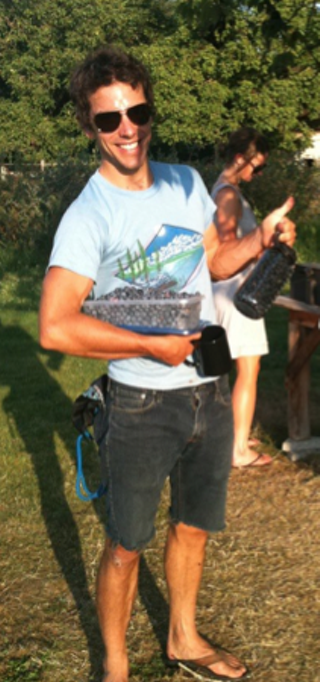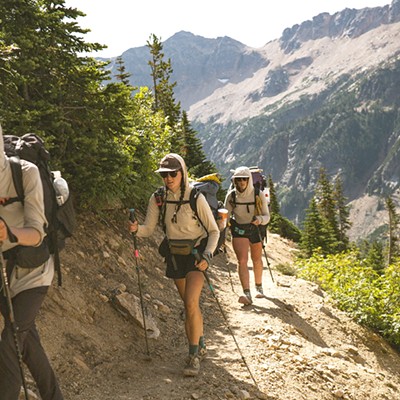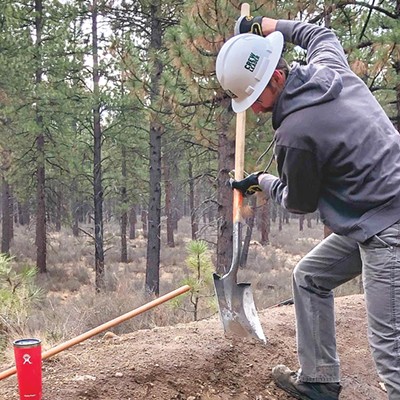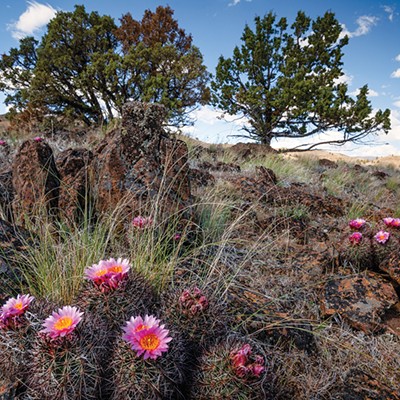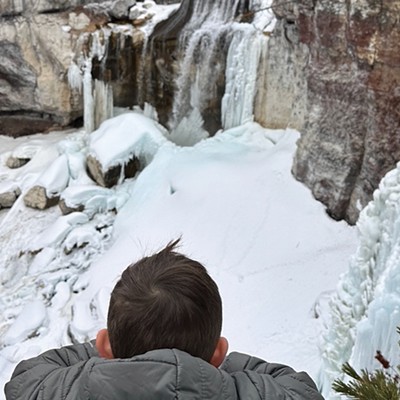Billy Farwig is pissed.
The lifelong skier and popular ski coach at the Mt. Bachelor Sports Education Foundation has dedicated a large chunk of his life to honing his ski technique. An expert skier, Farwig’s on-snow skills have allowed him to shred big mountains all over the world, most recently in Chile. But it took the 55-year-old skier decades to cultivate such skill.
And now, with the advent of all-mountain skis, it seems an intermediate skier can become an expert overnight, just by stepping onto a new pair of planks.
Over the past couple of years, ski companies have listened to the demands of the public and, rather than rely on technology from the race world, companies are now focusing on the expanding freeride community and looking to them for feedback.The result is a fat ski with dual rocker (upturned tips) and reverse camber (flex). Because they are nimble, laterally stiff and quite wide, such skis make navigating the infamous “Cascade cement” much easier. They’re versatile, too. They handle crust, corn, slop and powder with aplomb.
“It’s bullshit,” Farwig said.
He’s kidding—kind of.
“It was a lifelong skill quest to learn how to go down steep, unstable snow. Now, anybody can get into the deep stuff on Northwest,” Farwig said, referencing the treed powder zone at Mt. Bachelor.
Of course the MBSEF ski coach is actually psyched that skiing is more accessible, from a technique standpoint. He’s just bummed the ski industry didn’t get a handle on shaping technology and carbon-fiber construction sooner.
The new do-everything, all-mountain-style skis, which are often between 105-120mm underfoot, are not just for powder days, either.
“In the Cascades, they’re good for everybody, if they’re skiing on wild snow,” said David Marchi, a ski guide and owner of the new downtown gear shop and café, Crow’s Feet Commons. By “wild snow” he means ungroomed surfaces, which in the Pacific Northwest, can vary greatly from day to day and even hour to hour.
“They make heavy snow feel like light powder—I’m not kidding,” said Meredith Brandt, an area expert skier who rides on Armada’s women-specific VJJ all-mountain ski. Other skis that fit in this all-mountain genre are Armada’s JJ, Moment’s Bibby Pro, Rossignol’s S7 and Black Diamond’s Amperage.
“I can ski twice as many runs because of how much energy I’m saving,” Brandt said. The petite shredder also said she feels as comfortable skiing her VJJs (pronounced vuh-jayjay) on groomed runs as she does busting through choppy Central Oregon powder.
“A friend called me a 70-percent better skier,” added Brandt, who splits her time between the resort and the backcountry evenly.
Marchi agreed with Farwig, Brandt and others—the all-mountain skis which have proliferated over the past few years can make you a better skier.
Here’s why.
The dual rocker makes the ski more playful, forgiving and generally easier to handle since, with upturned tips, less of the actual ski is making contact with the snow.
“You don’t have to know how to get a ski on its edge,” Marchi said of the fat and easy-turning all-mountain skis.
The second advantage is the massive width of the skis. Manufacturers have been cranking out super-fat skis for years but, partially because they lacked lateral stiffness, such skis were made for powder only. Slightly less fat than a dedicated powder ski, all-mountain sticks allow skiers to float on top of whatever surface they’re skiing. But, unlike powder skis, they’re burly enough to blow through the mank.
Finally, all-mountain skis feature reverse-camber technology. All that means is that, unlike traditional skis, which have a bow-shaped flex built into them, freeride skis are shaped more like the mustache of a circus ringmaster—curled ends with a little rise in the middle. For all-mountain skis, this is best of both worlds.
Marchi said that unlike specialty skis from the past, these new fat skis aren’t made just for the aggressive charger. Because they are so easy to ski and can handle terrain of all sorts, they’re capturing the attention of Northwest skiers looking for that one pair of skis that will really up their game.
“They’re for those who are looking for a powder stash, but then want to come out of the woods and rip groomer turns back to the bottom,” Marchi said.
Farwig, just like the host of other skiers who are looking for a good time in the mountains, has also turned to fat freeride skis. And he’s gotten over the fact that new skiers were able to bypass the sport’s steep learning curve.
“It’s really opened the door for non-skiers,” Farwig said.
Photo: Adam Clark

